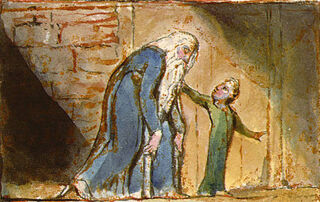Genetics
Aging, Like Everything Else, Is a Process of Copying
Environment competes with genetics in DNA copies of life.
Posted October 27, 2022 Reviewed by Michelle Quirk
Key points
- Like all viruses, replication permits SARS-CoV-2 to incidentally sneak around immunities.
- When an older person looks young and healthy, we tend to attribute that to good genes maintaining the body.
- As we age, genetics matters less than good and bad contributions from the environment.

For nearly two years, I have been writing blog posts for Psychology Today, stretching the theme of time to surprisingly wide-ranging boundaries. Extremes spread from circadian rhythms to racism and further afield to hypothetical thoughts about Putin and nuclear weapons or mice getting fat from breaking with circadian rhythms.
I don't profess to know everything about the subjects I explore. But I want my readers to know that, as a science writer, I thoroughly research my topics from peer-reviewed journals before breaking down the technical wordings to compose an understandable presentation for my widespread intelligent audience.
Sometimes my posts seem too simple. Readers read a few paragraphs, and ask, Why is he writing about the obvious? As they read further, the obvious becomes mysterious before it collects itself to form thoughts that what first appeared to be apparent is not evident.
For example, I begin by asking this question: Is a copy of a copy identical to the original?
Remember those photocopies that came from Xerox machines of the last century? Originals were always sharper than copy copied from it. If you copied the copy, the difference was evident. That same apparent difference is not so clear for modern advanced print-copy machines of this century. By the mechanisms of our most advanced machines, the original is so sharp that any deviation in its copy is almost unperceivable, at least to human glances. Mathematical algorithms that translate light to digits and digits to pictures are not physical constructs of molecules. Humans use light signals from their eyes to interpret what they see with their brains. They picture what they expect to see. Mathematical algorithms do the same, though they are much better at the precision of expectations. So they make corrections according to those expectations.
However, on printed paper, there is a difference between a copy and a copy of a copy. While the digital picture through pixels is nothing more than numbers, each blank sheet of paper of a sheaf is minutely distinct from all the others. And, considering ink, we are talking about a physical process that is not microscopically exact.
All of this is obvious, so where am I going with this? From the thought of copying copies on copy machines, I follow thin threads along a long road to wherever it goes.
Copy, copy, copy. That is how we age. It is how severe acute respiratory syndrome coronavirus 2 (SARS-CoV-2) and other viruses continue to sneak around immunities. Take, for instance, the information on aging from Peter Sudmant, professor of integrative biology at UC Berkeley. He said, “We’re all aging in different ways. While young individuals are closer together in terms of gene expression patterns, older individuals are further apart. It’s like a drift through time as gene expression patterns become increasingly erratic.”
New Cells to Replace Old Ones
When an older person looks young and healthy, we tend to attribute that youth to good genes doing good work on maintaining the body. Sudmant’s research in human genetics suggests otherwise. As we age, genetics matters less than bombarding contributions from the environment.
Let’s think about this in a different connection. Our cells are constantly rebuilding through DNA replication and RNA instructions to build protein molecules. Every night while we sleep, the circadian oscillator body clock tells genes in the nuclei of body cells to transcribe messenger RNA molecules that migrate to the cytoplasm to give information and a green light for building proteins to help the body stay in good shape and maintain a proper weight.
Replication and transmission come from chemical instructions of what to do. They require copying instructions, over and over again, for millions of body cells. Along with that, there is the wisdom of age from overlapping memories and thoughts that recur and change. Whatever we thought of at 16 incubated to be revised at 18 and revised again and again by minuscule measures as we read, talk, and listen. Over and over again, our earlier truths went through revisions to become what we now call wisdom, that quality that could never be achieved without going through the aging process of replicating understandings.
Take, for example, my identical twin grandchildren, Sophie and Yelena. They have the same genes that made it difficult to tell them apart when they were a few years old. But they aged differently. By 5, they looked, acted, and aimed toward goals differently. Their gene expression profiles diverged. Sophie is now at a small college in Vermont, while Yelena is at an enormous university in Boston. They each had a choice of either school. They think differently, though they hold the same fundamental ideologies of their birth environment and the same temperament they were born with.
Viruses' Continued Existence
Take another example. Every virus variant comes from an error in the replication of the proteins in the virus. For SARS-CoV-2 to continue to exist in any harmful way, it must use living human (or some animal) tissue to replicate itself. The virus is not alive but is a collection of proteins that bind to living cells hosting the SARS-CoV-2 replication. With each copy, there is a relatively small likelihood of error. The odds of mistakes in one human are almost zero, perhaps one in a million. That means when it hits a million hosts the odds are high enough to make it somewhat likely that one of those million infected people will be host to a replication error before transmitting the virus to someone else, and so, on and on, it spreads.
I could go on with how replication relates to so many of my posts. Read: “Why Some Rational People Believe in Conspiracy Theories,” or “Is Your Phone Sucking Up Your Valuable Time?” I could even make an argument connecting replication to my articles on racism, Putin’s game plan for Ukraine, or mice getting fat from breaking with circadian rhythms. Those connections will have to wait for another time. Fortunately, as with copying, time moves on.




